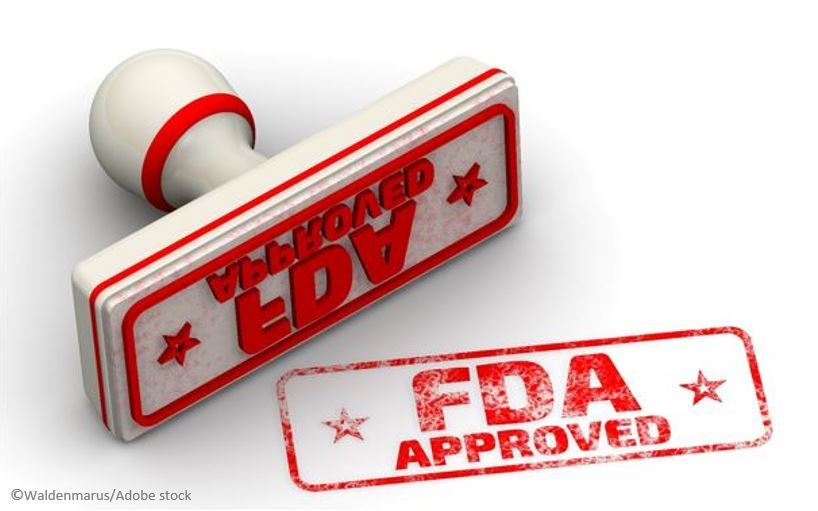- Clinical Technology
- Adult Immunization
- Hepatology
- Pediatric Immunization
- Screening
- Psychiatry
- Allergy
- Women's Health
- Cardiology
- Pediatrics
- Dermatology
- Endocrinology
- Pain Management
- Gastroenterology
- Infectious Disease
- Obesity Medicine
- Rheumatology
- Nephrology
- Neurology
- Pulmonology
FDA Approves Fixed-Dose Macitentan/Tadalafil Tablets (Opsynvi) For Pulmonary Arterial Hypertension
For the first time, 2 drugs recommended as first line treatment for PAH are combined in a single oral once-daily therapy, which could reduced burden of care.
©Waldenmarus/stock.adobe.com

The single-tablet macitentan and tadalafil combination Opsynvi (Johnson & Johnson) was approved on Friday by the US Food and Drug Administration (FDA) for the chronic treatment of adults with pulmonary arterial hypertension (World Health Organization [WHO] Group I) and WHO functional class (FC) II-III.1
The combination oral therapy is indicated for use by individuals with PAH who are treatment naïve or who are already treated with one or both of the combination’s components, the endothelin receptor antagonist [ERA] macitentan and the phosphodiesterase 5 [PDE5] inhibitor tadalafil, or who are currently treated “concomitantly with stable doses of macitentan 10 mg and tadalafil 40 mg (20 mg x 2) as separate tablets,” according to the announcement by drugmaker J&J.1
The 2 agents are typically prescribed together as guideline-directed initial therapy for PAH, according to the company statement.1
"Clinical guidelines recommend treating patients with initial and sequential dual-combination therapy, regardless of risk at initial diagnosis and follow-up. Historically, this required patients to take multiple pills because no single-tablet combination therapy targeting two or more pathways was available," Kelly Chin, MD, professor of internal medicine and director or the pulmonary hypertension program at UT Southwestern Medical Center, and an investigator in the A DUE study said in the press statement.1
"As administration of macitentan and tadalafil together are commonly prescribed for initial therapy for PAH, the introduction of a single tablet combining both is promising for clinicians treating patients as it may help bridge the gap between clinical guidelines and everyday clinical practice, while offering a patient-friendly approach to support initial combination therapy and rapid escalation for the appropriate patients."1
The foundation for the FDA approval is the A DUE study, a double-blind, randomized, active-control parallel group study that compared the efficacy and safety of the fixed dose macitentan and tadalafil combination to each drug as monotherapy in adults with PAH (WHO FC II or III) who were treatment naïve or on stable doses of an ERA or PDE5 inhibitor for at least 3 months.2 The study’s primary endpoint was the change from baseline in pulmonary vascular resistance (PVR) at week 16.2 After this treatment period, participants were transitioned to the study’s open-label period for 24 months.2
According to the findings, published in the Journal of the American College of Cardiology, change in PVR with the macitentan and tadalafil single-tablet combination was significantly greater versus macitentan (treatment effect, 29%; 95% CL, -18% to -39%; P < .0001).2 PVR change with the combination was also significantly greater versus tadalafil (treatment effect, 28%; 95% CL, -20% to -36%; P < .0001).2
"People with PAH often live with the burden of taking many pills each day, which can pose challenges," said James F List, MD, PhD, J&J global therapeutic area head, whose team oversees a portfolio of programs including pulmonary hypertension, said in the statement.1 "We're thrilled to bring this single-tablet combination therapy to patients, as it has the potential to optimize disease management and fulfill a significant unmet need in supporting recently updated treatment guidelines that call for initial or early combination treatment.”1
J&J emphasized that the single tablet macitentan and tadalafil combination label carries a Boxed Warning because of the risk of embryo-fetal toxicity. Women who are prescribed the medication are required to enroll in the Macitentan-Containing Products Risk Evaluation and Mitigation Strategy (REMS) program.1
References
US FDA approves Opsynvi (macitentan and tadalafil) as the first and only once-daily single-tablet combination therapy for patients with pulmonary arterial hypertension (PAH). News release. Johnson & Johnson. March 22, 2024. Accessed March 25, 2024. https://www.investor.jnj.com/news/news-details/2024/U.S.-FDA-Approves-OPSYNVI-macitentan-and-tadalafil-as-the-First-and-Only-Once-Daily-Single-Tablet-Combination-Therapy-for-Patients-with-Pulmonary-Arterial-Hypertension-PAH-2024-FqFYN-hx5S/default.aspx
Grünig E, Jansa P, Fan F, et al. Randomized trial of macitentan/tadalafil single-tablet combination therapy for pulmonary arterial hypertension. J Am Coll Cardiol. 2024;83:473-84.
doi:10.1016/j. jacc.2023.10.045
